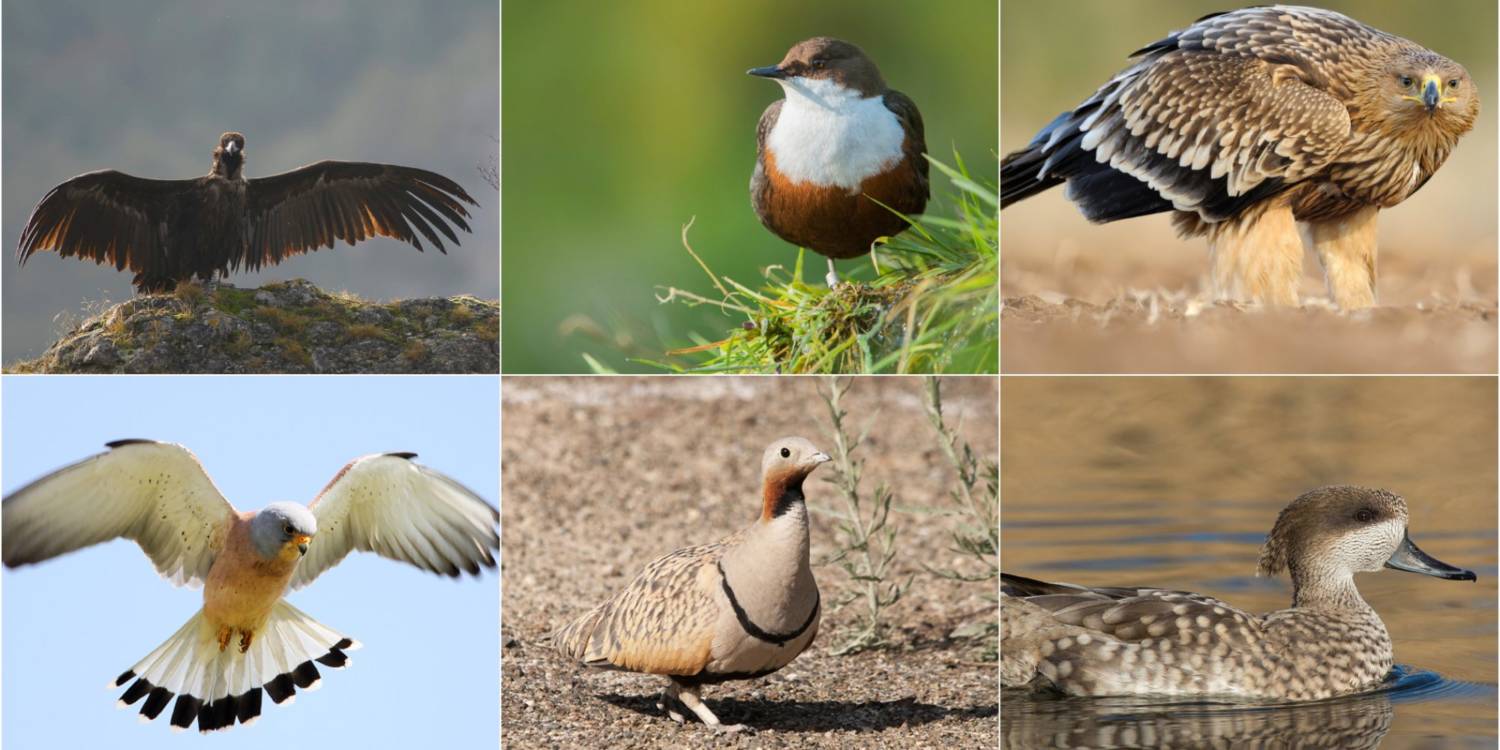Six species of birds have perished from Cyprus since 1950, according to BirdLife Cyprus.
Specifically, the Black Vulture, Lesser Kestrel, Marbled Duck, Black-bellied Sandgrouse, Dipper and the Eastern Imperial Eagle have disappeared from the island in the past seven decades, the nature conservation organisation wrote on its website on Wednesday.
“Six species may not sound like a big number to have lost over seven decades, but in ‘normal’ times, with background rates of extinction, it is probably fair to say that a person born in Cyprus in 1950 should only have witnessed one such loss over a lifetime,” BirdLife says.
Black Vulture

“With an impressive wingspan reaching almost 3 meters, the Black Vulture is one of the largest vultures in the world. In the 20th century, frequent poisonings and a reduction in available food made this majestic bird a rare sight in Europe’s skies.
Although measures taken to tackle wildlife poisoning resulted in a rapid recovery of the species in western Europe, populations collapsed in many eastern European countries, including Cyprus.
The few pairs that nested in big old pine trees in the forests of Troodos and Pentadaktylos mountains disappeared around the mid-60s, for the same reasons. After this bitter lesson, preventing the extinction of the Griffon Vulture, the only vulture species remaining on our island, is a bet we simply cannot afford to lose.”
Dipper

“Undaunted by the sight of a fast-flowing river, the Dipper has impressive diving skills. Plump yet hydrodynamic, it dives underwater to feed on small fish and aquatic invertebrates. And as if that weren’t enough, it can even walk on the bottom of a river, even against the current.
In Cyprus, this riverine gem bred in small numbers by the streams of Troodos mountains and its song echoed in the forest along ravines. Although not confirmed, its extinction from our island sometime in the 40s or 50s is probably related to the widespread use of the highly toxic insecticide DDT in streams to combat malaria. This notorious pesticide was banned in most countries in the 70s, but its byproducts remain in the soil and groundwater to this day.”
Eastern Imperial Eagle

“Regal in appearance and with a fitting name, the Eastern Imperial Eagle is one of Europe’s rarest raptors. As it surveys its territory from a vantage point, one could say that it resembles a king sat on his throne.
But this powerful predator has become the prey. Poisoning, collisions with power lines, illegal killing and the loss of important breeding and foraging areas have driven the species into a downward spiral.
In Cyprus, the Eastern Imperial Eagle nested in small numbers in large pine trees in the Troodos and Pentadaktylos mountains. The last time it was recorded breeding on our island was in 1985. Today, the only species of eagle that breeds here, the Bonelli’s Eagle, is still faced with the same threats that drove the Eastern Imperial Eagle to extinction.”
Lesser Kestrel

“To the untrained eye, the elegant Lesser Kestrel is easy to confuse with its better-known relative, the Common Kestrel. Unlike the Common Kestrel however, which is usually seen alone or in pairs, the Lesser Kestrel is a social species that breeds in colonies and hunts in groups.
During the second half of the 20th century, the Lesser Kestrel population declined sharply throughout Europe. This was mainly due to loss of habitat and breeding sites and the intensification of agriculture along with the extensive and often indiscriminate use of pesticides, which led to the decline in insect populations, the Lesser Kestrel’s main source of food.
The last breeding record on our island was in 1929. Today, the Lesser Kestrel “honors” us with its presence only for a short while, as it migrates between Europe and Africa every spring and autumn.”
Black-bellied Sandgrouse

“With a small head and compact body, the Black-bellied Sandgrouse is a shy land bird found in deserts and arid plains.
In Cyprus, it bred until the 70s in small numbers in the most barren areas of Mesaoria, mainly between Nicosia and Larnaca. Since then, its population has declined rapidly, as it has across Europe due to agricultural intensification and increasing hunting pressure. It probably continued breeding on our island for a few more years in areas within the buffer zone (for obvious reasons), although this was never confirmed (again for obvious reasons).
Today, the Black-bellied Sandgrouse has become a rare and almost accidental visitor to Cyprus during migration. The nearest area where it breeds is in central Turkey, while some individuals winter further south, mainly in Syria and northern Iraq.”
Marbled Duck

“With a limited range from the Western Mediterranean to Central Asia, the Marbled Duck is a nomadic duck species found in shallow and seasonal freshwater or brackish wetlands.
In the 20th century, the species’ global population declined dramatically due to the loss and degradation of its breeding sites and due to hunting pressure during the breeding season.
The last breeding record on our island was in the 50s. This unfortunate loss is probably related to efforts to combat malaria (and mosquito outbreaks) in the late 19th century, through the extensive planting of eucalypts to drain wetlands and marshes.”
(BirdLife Cyprus)






